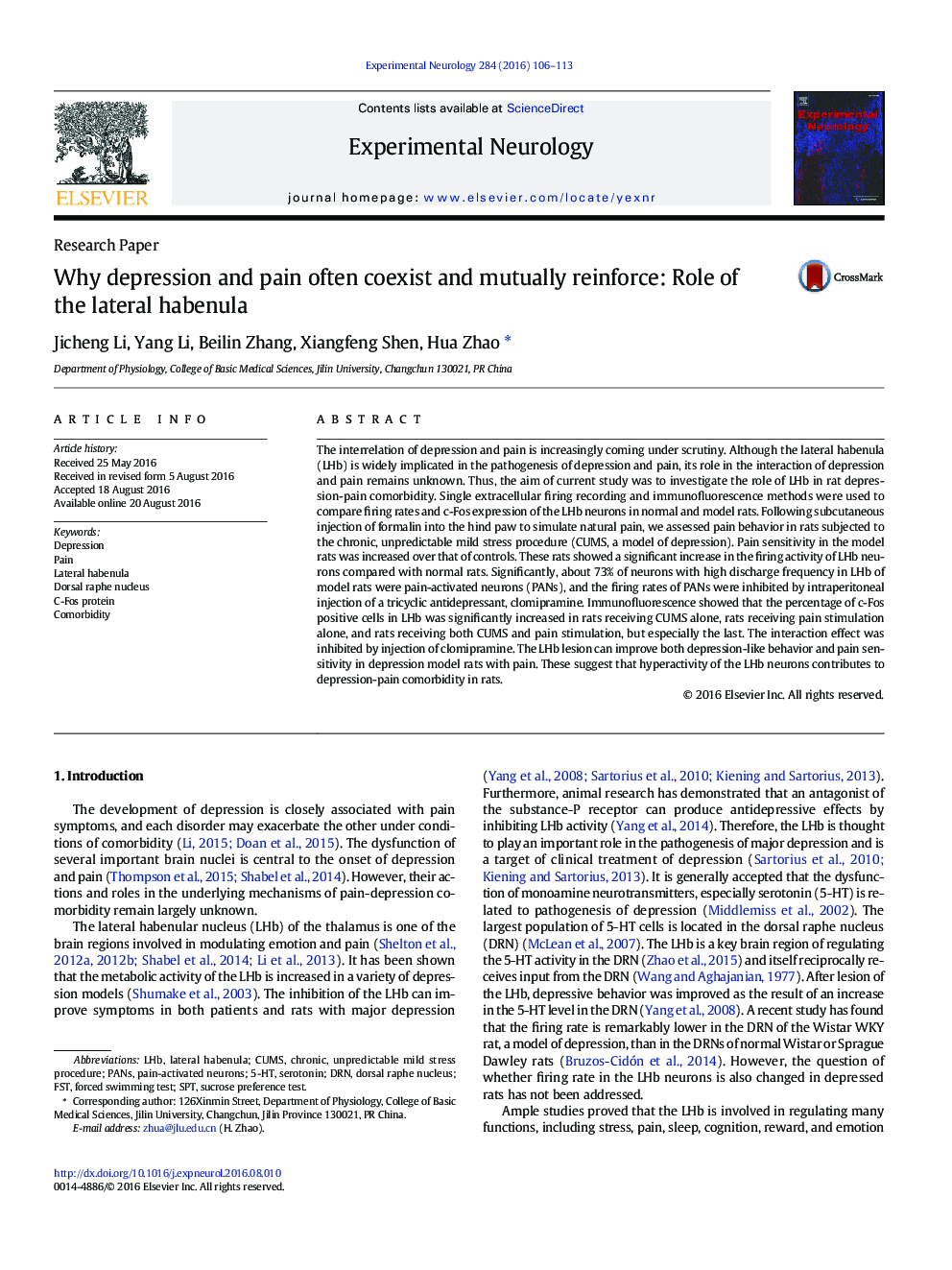| Article ID | Journal | Published Year | Pages | File Type |
|---|---|---|---|---|
| 3055329 | Experimental Neurology | 2016 | 8 Pages |
•The firing rates of pain-activated neurons in the LHb of depressed rats were increased•The percentage of c-Fos positive cells in LHb was significantly increased in rats receiving CUMS and pain stimulation•Antidepressant suppressed the firing rates of PANs and c-Fos expression by pain stimulation in LHb of depressed rats•The LHb lesion can improve both depression-like behavior and hyperalgesia in depressed rats with pain sensitivity•Hyperactivity of the LHb neurons contributes to depression-pain comorbidity in rats
The interrelation of depression and pain is increasingly coming under scrutiny. Although the lateral habenula (LHb) is widely implicated in the pathogenesis of depression and pain, its role in the interaction of depression and pain remains unknown. Thus, the aim of current study was to investigate the role of LHb in rat depression-pain comorbidity. Single extracellular firing recording and immunofluorescence methods were used to compare firing rates and c-Fos expression of the LHb neurons in normal and model rats. Following subcutaneous injection of formalin into the hind paw to simulate natural pain, we assessed pain behavior in rats subjected to the chronic, unpredictable mild stress procedure (CUMS, a model of depression). Pain sensitivity in the model rats was increased over that of controls. These rats showed a significant increase in the firing activity of LHb neurons compared with normal rats. Significantly, about 73% of neurons with high discharge frequency in LHb of model rats were pain-activated neurons (PANs), and the firing rates of PANs were inhibited by intraperitoneal injection of a tricyclic antidepressant, clomipramine. Immunofluorescence showed that the percentage of c-Fos positive cells in LHb was significantly increased in rats receiving CUMS alone, rats receiving pain stimulation alone, and rats receiving both CUMS and pain stimulation, but especially the last. The interaction effect was inhibited by injection of clomipramine. The LHb lesion can improve both depression-like behavior and pain sensitivity in depression model rats with pain. These suggest that hyperactivity of the LHb neurons contributes to depression-pain comorbidity in rats.
